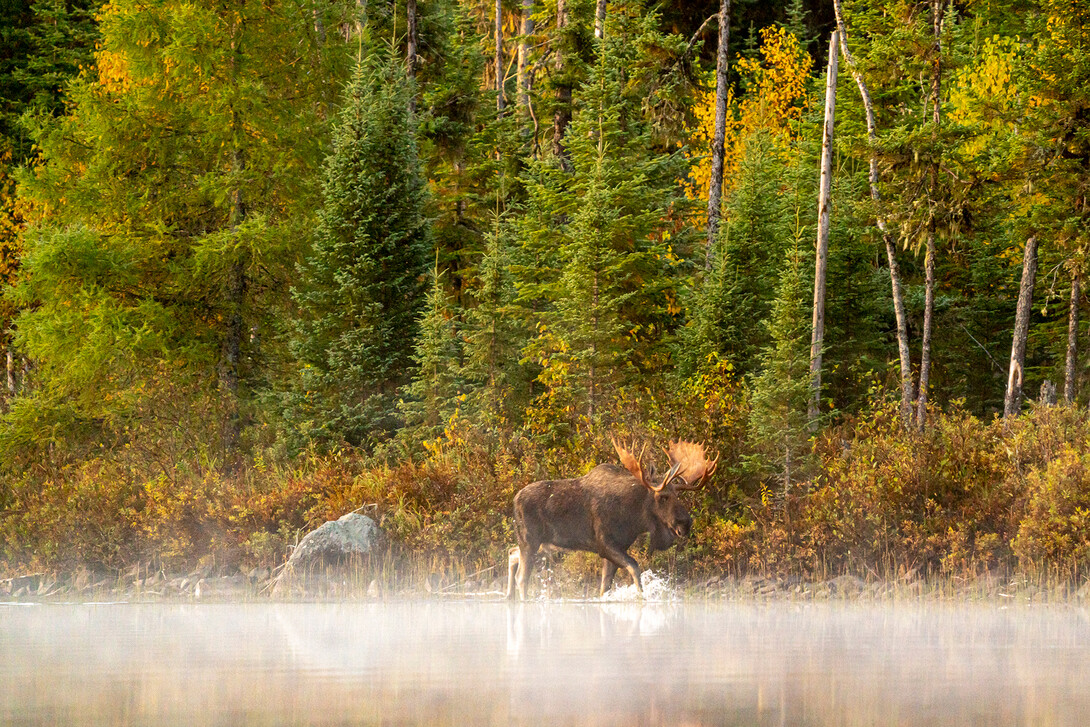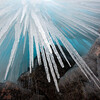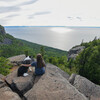
10 Classically Canadian Animals You Can See in the Fall in Ontario

Fall is the perfect time to get out in nature—but not just because of the crisp weather and beautiful scenery. Fall is also an ideal time to see animals, many of which become more active than ever as they prepare for the long winter ahead.
Let’s not forget fall continues after the colourful leaves have fallen from the trees. Although the beautiful backdrop is gone, it’ll be all the easier to see animals amid the bare trees in the usually thick and lush forests.
The best way to improve your chances of seeing animals? Go out around dawn and dusk, when animals are generally more active, and be as quiet as you can. The details on each animal below will help you figure out the best habitats to find them.
It’s important to note that it’s best to appreciate and enjoy these animals in their natural environments and to do as little as possible to alter their behaviours. Feeding animals can disrupt their life processes and cause unnecessary stress. In the case of larger mammals like moose or black bears, it can be downright dangerous for you and the animal. Likewise, getting too close to animals can be harmful to both the animals and you. Take a pair of binoculars with you so you can view the animals all the better from a safe distance.
You should also take note of fall hunting season dates and use caution when spending time in the woods in the autumn. Wear blaze orange and check hunting dates for regions in Ontario here.
How to build the perfect fall wildlife viewing vacation
If you aren’t picky about what type of wildlife you encounter, use the following resources to plan a trip to areas ripe with animal viewing opportunities and get expert advice on how to increase your odds.
Forest the Canoe: Located on the Goulais River with access to Lake Superior Provincial Park and the nearby Algoma Highlands, this tour operator can take you out on any number of adventures where wildlife encounters are a possibility. They can also provide local advice to help you find the animals you wish to see on your own.
Rock Island Lodge: Book a room at the lodge on Lake Superior and spend your days exploring the Michipicoten River—a hot spot for bald eagles and other wildlife.
Chapleau Crown Game Preserve: This 700,000-hectare swath of land northeast of Wawa provides some of the best wildlife viewing opportunities in the province, in part due to the fact that it’s closed to hunting and trapping. A guided canoe trip on the Missinaibi River with MHO Adventures will take you right through the heart of the preserve.
Hilliardton Marsh Research and Education Centre: Located 20 minutes north of Temiskaming Shores, Hilliardton Marsh provides opportunities to learn about wetland ecology and see songbirds up close. In the fall, the researchers at the Centre monitor owls.
Woodland Caribou Provincial Park: Seeing fewer than 1,000 visitors each year, the quiet solitude of Woodland Caribou, located near Red Lake, Ontario, means you are that much more likely to see pristine wildlife that has been uninfluenced by human development and interference. Take a guided canoe trip with Goldseekers to experience the magic of this remote park.
Top 10 animals to view in Ontario in the fall
1. Moose
In Ontario, moose populations are concentrated in boreal forests, specifically marshes and areas that have been logged previously. Besides aquatic plants, moose love to eat the regrowth in clearcuts. This makes Northern Ontario the prime place to see them.
Take a trip to the Chapleau Crown Game Preserve and explore the waterways there to see moose in the wild. Be extra careful to keep your distance, as fall is also rutting season for moose—a time when they are breeding and more active in daytime hours.

2. Bearded Seals
Seals in Ontario? It might seem unbelievable, but many forget our massive province has a saltwater coastline on James Bay, leading into the Arctic Ocean. It’s an area abundant in wildlife, encompassing the Moose River Migratory Bird Sanctuary. In addition to being a haven for shorebirds, songbirds and waterfowl, adorable bearded seals frequently lounge along sandbars.
Bearded seals are the largest seal species in the Arctic, weighing up to 360 kg (800 lbs). The thick, stiff whiskers on their faces give them their namesake beards. Their winters are spent hauling on sea ice, but it’s not uncommon to find them on sandbars and in shallower waters before the ice arrives.
Take the Polar Bear Express from Cochrane to Moosonee and Moose Factory in late August or September for a chance to glimpse seals among other wildlife at the edge of the Arctic.
3. Flying Squirrels
Coasting through the night sky with their built-in wingsuits, flying squirrels are much more common than people realize. Because they are nocturnal, few people catch sight of them. They live in forests, using abandoned woodpecker nests to keep warm.
Finding flying squirrels is easiest in the fall or winter when leaves drop from trees. They often raid bird feeders after dark, so keep an eye on them late at night. They prefer forests with large trees for roomy nest hollows. Old-growth forests with many large trees—like those you’ll find on a Temagami canoe trip—tend to have higher flying squirrel populations.

4. Hawks
In the fall, different species of birds of prey move through the province on their southward journeys. Broad-winged hawks are one of the best-known examples of mass migration, travelling together in large groups called kettles. They all take advantage of the same thermal (warm air mass), which helps them effortlessly coast through the air. Looking up in the right spot on a September day, you may see dozens of hawks coasting closely together. Other hawk species commonly seen in Northern Ontario include sharp-shinned and rough-legged hawks.
Spending time at one of the bird observatories in the north, like Hilliardton Marsh or Thunder Cape, will increase your chances of seeing birds up close with the help of knowledgeable researchers and volunteers. You can also visit provincial parks, particularly ones with high vantage points to maximize your chances of seeing soaring hawks.

5. Blue Jays
In fall, some blue jays choose to group up, forming large flocks as they move around eastern North America. The sight of hundreds of blue jays against changing leaves is truly a spectacular sight.
These large flocks tend to occur along the Great Lakes. Visit migration highways like the Thunder Cape Bird Observatory on the tip of Sleeping Giant Provincial Park. The Park as a whole is an excellent place to spot blue jays and other birds travelling along the coastline. Through fall and winter, blue jays reliably visit feeders in yards and can be seen along roadsides, looking for late fruits and seeds.

6. Canada Geese
While some geese choose to overwinter in Southern Ontario, many of the geese that live in the far north migrate to the southern U.S., spending winters in farmers’ fields. Before they make the journey south, they often congregate in large numbers. Looking up in September—it’s not uncommon to see hundreds of geese flying in a “V” pattern that looks like it is several kilometres long.
Finding Canada geese in the fall is a matter of looking for food sources. They are particularly drawn to marshes, which provide food and protection from predators. Geese will also congregate in farmers’ fields, especially ones that were growing corn the year before. Fall is hunting season for geese and ducks—an important activity for many people across Northern Ontario. Those wishing to get a good look at geese at this time may find they are wary, like many wild animals can be.
7. Black Bears
As autumn approaches, bears get busy. They are scrambling to fatten up ahead of the long northern winter. Their diet at this time of the year is mainly made up of fruit and nuts, and they can nearly double their weight in the months leading up to hibernation.
While stuffing their bellies, bears also seek out a den site where they can spend the winter. Often these are simply depressions in the ground or the underside of upturned trees. The Chapleau Crown Game Preserve has one of the province's highest densities of black bears. In this natural area, bears live relatively undisturbed lives instead of raiding landfills or people’s trash bins.
When viewing bears, remember they are wild animals that can be dangerous, and they deserve space. Close encounters with black bears may end badly for humans and often do for the bears. Feeding or luring bears can make them habituated and more likely to seek out these unfortunate encounters.
8. Beluga Whales
Like seeing bearded seals, to be one of the select few who has seen wild whales in Ontario, you’ll need to travel far north. Belugas are the whales most frequently seen in Ontario’s coastal waters of Hudson Bay and James Bay. It’s estimated that there are 78,000 to 90,000 belugas across the Canadian Arctic, with the highest concentrations in western Hudson Bay. This part of the province is difficult to access for anyone other than the local communities who live there.
Visitors to Moosonee and Moose Factory on James Bay may have an opportunity to see them, especially in the late summer before they move out to the open seas for the winter. The best chance will be to take a boat taxi and look for their white heads on the sea surface.

9. Beavers
Fall is a busy time for beavers. Before the ponds freeze, they must ensure enough food is stored for the winter. Beaver activity spikes as they work to cache their sticks underneath the water, close enough that they will be accessible from their lodges. An underwater entrance ensures beavers can travel from home to their “pantry” without being spotted by predators like wolves.
Beavers are widespread throughout Northern Ontario. Finding them is a matter of looking for a dam and lodge. If the water on the pond above the lodge is still, it means the beavers are active on the pond. They are most active around dawn and dusk, and that’s the best chance to catch a glimpse or photo of one.
10. Spirit Moose
Ivanhoe Lake Provincial Park near Foleyet is home to an exceptional genetic anomaly that colours the local moose white. These aren’t necessarily albino moose—instead, the same processes that give us red or blond hair cause these moose to have a pale colouring. Called “spirit moose,” these animals are locally revered, and a stroke of luck is needed to see one in person.
Recommended Articles

Top Summer Vacations In Northern Ontario

25 Adventurous Fall Activities in Ontario

Call Us Crazy

Planning a Family Vacation?
Women only

Paddle the waters Less travelled

So you think you can paddle

watch World's top canoeing short film

Point Grondine Park Guide

Best Backcountry Camping in Ontario

Ontario Parks 30x30 Nature Challenge

"How to" Videos

A must-watch video

How to Photograph Icicles

explore Toronto by bike

Ray mears on wabakimi

Love dogs?

ARe you tough enough?

Big views, no big backpack




















